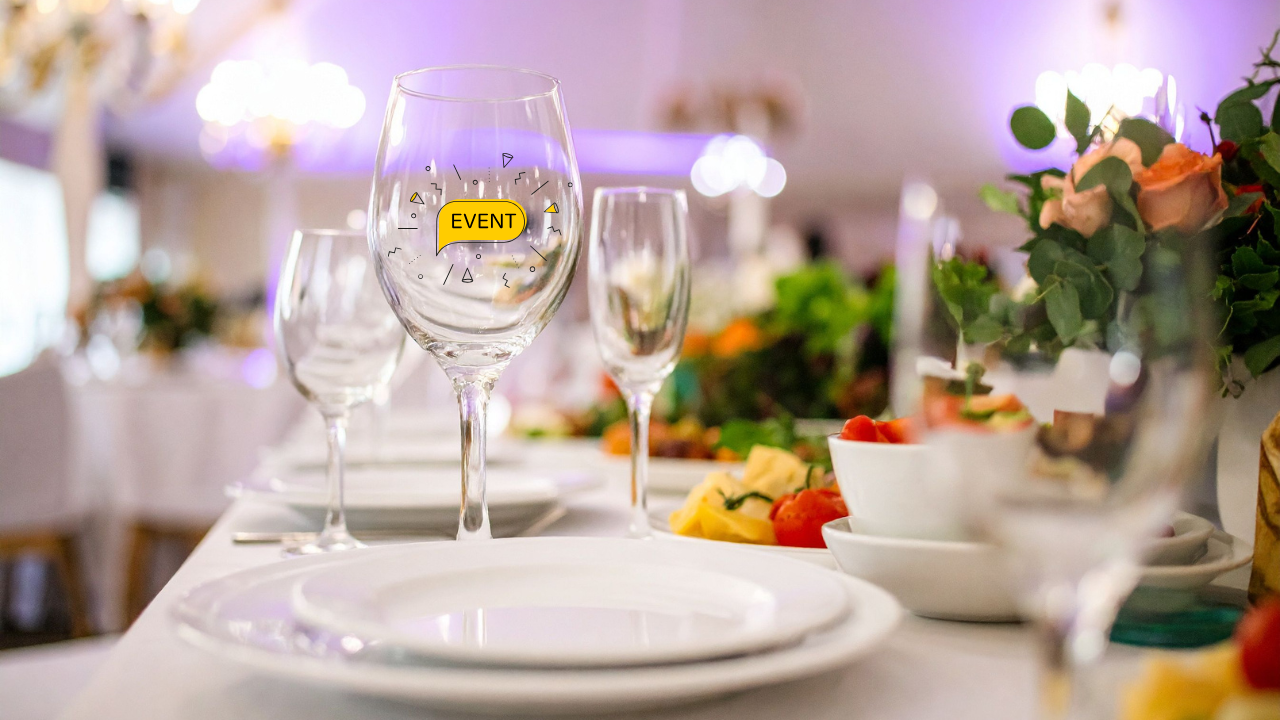Catering for large-scale events, such as corporate conferences, weddings, or festivals, is a complex task that demands meticulous planning, coordination, and execution. With hundreds or thousands of guests, the stakes are high, and the catering can significantly influence the event’s success. Blink Experience, a leading event management company, excels at coordinating such efforts to ensure seamless execution. This article outlines essential strategies for managing catering for large-scale events, addressing planning, logistics, menu design, staffing, and post-event evaluation, drawing on industry insights to deliver a memorable guest experience.
The Importance of Catering for Large-Scale Events
Catering is more than just providing food; it shapes the guest experience and reflects the event’s quality. According to industry insights, well-executed catering can enhance guest satisfaction and event success, while poor planning can lead to dissatisfaction and logistical issues (Blue Plate). For large-scale events, caterers must balance quality, quantity, and efficiency while accommodating diverse dietary needs and ensuring seamless service. Effective catering requires strategic planning to align with the event’s purpose and guest expectations.
Key Strategies for Managing Catering
The following table outlines critical steps for managing catering for large-scale events, ensuring a smooth and successful operation:
|
Step |
Description |
|---|---|
|
Define Event Type and Purpose |
Align catering with the event’s theme (e.g., formal conference vs. casual festival) to guide menu and service style. |
|
Set a Budget |
Include costs for food, beverages, staffing, equipment, gratuities, and rentals. Allocate a 10-15% contingency fund. |
|
Estimate Guest Numbers |
Use RSVP systems and plan for extra guests to avoid shortages. |
|
Choose a Caterer |
Select a caterer with experience in large events. Review references, sample food, and confirm their capacity. |
|
Design the Menu |
Offer diverse options, including vegetarian, vegan, gluten-free, and allergy-friendly dishes. Reflect seasonal and event themes. |
|
Select Service Style |
Choose buffet (casual), plated (formal), family-style (communal), or food stations (interactive) based on event needs. |
|
Coordinate with Venue |
Confirm kitchen access, equipment, space, permits, and insurance requirements. |
|
Organize Staff and Equipment |
Ensure adequate chefs, servers, bartenders, and cleanup crew. Secure serving dishes, utensils, and linens. |
|
Plan Presentation |
Use attractive tableware, garnishes, and themed decorations to enhance the dining experience. |
|
Manage Beverages |
Provide wines, beers, cocktails, and non-alcoholic options. Hire bartenders for efficiency. |
|
Prepare for Contingencies |
Have backup food, staff, and serving options for issues like weather or equipment failure. |
|
Communicate with Guests |
Inform guests about menu, seating, and service styles to manage expectations. |
|
Evaluate Post-Event |
Gather feedback and review budget, satisfaction, and challenges for future improvements. |
Planning and Preparation
Defining the Event’s Purpose
Understanding the event’s nature is the foundation of effective catering. A formal corporate gala requires a different approach than a casual outdoor festival. Align the catering style, menu, and service with the event’s theme to create a cohesive experience (Cooked Goose Catering).
Budgeting
Catering costs can escalate quickly, so establish a comprehensive budget that includes food, beverages, staffing, equipment, and gratuities. A 10-15% contingency fund helps cover unexpected expenses, such as last-minute vendor price increases. Regular budget tracking using tools like Excel ensures financial discipline.
Guest Estimation
Accurate guest counts are essential for ordering sufficient food and staffing. Use RSVP systems and plan for a buffer to accommodate last-minute attendees or no-shows. This prevents shortages and ensures a smooth experience (Cooked Goose Catering).
Choosing a Caterer
Select a caterer with proven experience in large-scale events. Research local options, read reviews, and request food samples to assess quality. Confirm their ability to handle the event’s scale and specific requirements, such as dietary accommodations or themed menus.
Menu Design
Craft a menu that reflects the event’s theme and accommodates diverse tastes. Include seasonal ingredients for freshness and cost-effectiveness light, earthy foods for spring/summer and warm, rich dishes for fall/winter (Blue Plate). Offer options for vegetarian, vegan, gluten-free, and allergy-friendly diets, clearly labeling dishes to avoid confusion. Balance the menu with proteins, carbohydrates, and vegetables to cater to varied preferences.
Service Style
Choose a service style that suits the event:
-
Buffet: Cost-effective and flexible, ideal for casual events. Use multiple stations to prevent long lines (Eventbrite).
-
Plated Service: Formal and structured, perfect for weddings or banquets, though more labor-intensive.
-
Family-Style: Encourages interaction with shared platters, suitable for smaller, intimate gatherings.
-
Food Stations: Interactive and engaging, allowing guests to mingle and customize their meals.
Logistics and Execution
Venue Coordination
Work closely with the venue to ensure it supports catering needs. Confirm kitchen access, equipment availability (e.g., ovens, refrigerators), and space for preparation and serving. Verify any permits or insurance requirements, especially for outdoor events or those involving alcohol (Cooked Goose Catering).
Staff and Equipment
Determine the number of chefs, servers, bartenders, and cleanup crew based on the event’s size. For large events, staff numbers may reach 200-300, requiring a clear line of command (Blue Plate). Secure equipment like chafing dishes, serving utensils, and linens, ensuring they are in good condition. For cost savings, consider disposable aluminum trays for casual events (Italian Garden).
Presentation and Setup
Food presentation enhances the guest experience. Use attractive tableware, garnishes, and themed decorations to align with the event’s ambiance. For example, a corporate event might feature sleek, modern displays, while a festival could use vibrant, colorful setups (Cooked Goose Catering).
Beverage Management
Offer a diverse beverage selection, including wines, beers, cocktails, and non-alcoholic options. Hire bartenders to manage service efficiently and ensure sufficient stock for the event’s duration. Consider self-serve beverage stations for casual events to reduce staffing needs (Eventbrite).
Contingency Planning
Prepare for unexpected issues like weather disruptions, equipment failures, or staff shortages. Keep extra food and supplies on hand and have backup staff available. Alternative serving options, such as pre-packaged meals, can address unforeseen challenges (Cooked Goose Catering).
Staff Management and Training
Large-scale events require a well-organized team. Break tasks into specific roles, such as food prep, serving, or cleanup, and establish a clear chain of command to ensure efficiency (Blue Plate). Train staff thoroughly on their responsibilities, emphasizing food safety and guest interaction. Having on-call staff is critical for handling unexpected issues, ensuring the event runs smoothly (Blue Plate).
Menu and Dietary Considerations
Seasonal Menus
Choose seasonal ingredients to ensure freshness and cost-effectiveness. For example, light salads are ideal for summer events, while hearty soups suit winter gatherings (Blue Plate).
Dietary Accommodations
Cater to diverse dietary needs by offering vegetarian, vegan, gluten-free, and allergy-friendly options. Clearly label dishes and communicate with guests in advance to understand their requirements. For international events, include dishes that appeal to varied cultural tastes (Cooked Goose Catering).
Quality and Quantity
Maintaining high-quality food in large quantities is challenging but essential. Use fresh, innovative ingredients and focus on attractive presentation to enhance the dining experience, even at scale (Blue Plate).
Specialized Kitchen and Equipment Needs
For very large events, consider using specialized event catering kitchens equipped with commercial-grade appliances and optimized workflows. These kitchens support high-volume production while maintaining food safety and quality (CloudKitchens). Invest in equipment like portable coolers to ensure proper temperature control during transportation and service, preventing spoilage and ensuring compliance with health regulations (Koola Buck).
Post-Event Evaluation
After the event, gather feedback from guests, staff, and organizers to assess the catering’s success. Use surveys to understand what worked well and what could be improved. Review the budget, guest satisfaction, and any challenges faced to refine future catering strategies. This reflective process ensures continuous improvement and better outcomes for subsequent events (Cooked Goose Catering).
Conclusion
Managing catering for large-scale events is a multifaceted endeavor that requires careful planning, precise execution, and adaptability. By aligning catering with the event’s purpose, setting a clear budget, selecting an experienced caterer, and addressing logistical and dietary needs, organizers can deliver a memorable dining experience. Strategies like contingency planning, staff training, and post-event evaluation further enhance success. With these approaches, caterers can navigate the complexities of large-scale events, ensuring guest satisfaction and a lasting positive impression.





